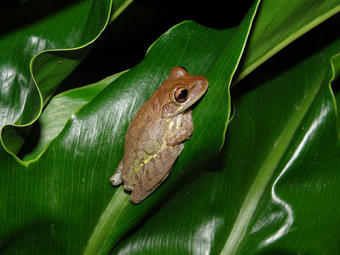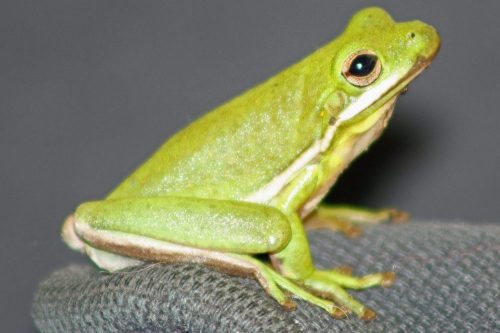NEW ORLEANS – They’re so small you’d think they’re harmless– until they eat the natives.
“Cuban treefrogs” have made a leap of more than 400 miles – from Florida to Louisiana- and biologists are getting nervous.
According to a study by the U. S. Geologic Survey of the Department of the Interior, Cuban treefrogs appear to have “hitched a ride” on some Florida palm trees that were planted at the Audubon Zoo in 2016. Zoo staff noticed the unusual-looking frogs soon after.
Homeowners may start to notice the newcomers too.
USGS Research Ecologist Brad Glorioso, the lead author of the study, says that Cuban treefrogs “can clog plumbing and cause power outages by short-circuiting utility switches where they seek refuge.”
And that’s not the worst of it.
“Cuban treefrogs grow much larger than native treefrogs,” says Glorioso, and they can “displace native treefrogs and will even eat smaller frogs.”
Glorioso says that if Cuban treefrogs edge out native frogs it “could have consequences,” disrupting the natural ecosystem between “predator and prey.”
How many are here? Brace yourself. Last fall, USGS scientists removed 2,000 Cuban treefrog tadpoles from two pools of water near the Zoo.
“The hope is,” says Glorioso, “that Cuban treefrogs do not reach and become established in the large tracts of public land, including the Barataria Preserve.”
Want to hear the sound of the invaders? Here’s the distinctive call of the Cuban treefrog, recorded by biologist Paul Moler of the Florida Fish and Wildlife Conservation Commission :

And here’s the call of our native green treefrogs, again courtesy of Paul Moler:





























